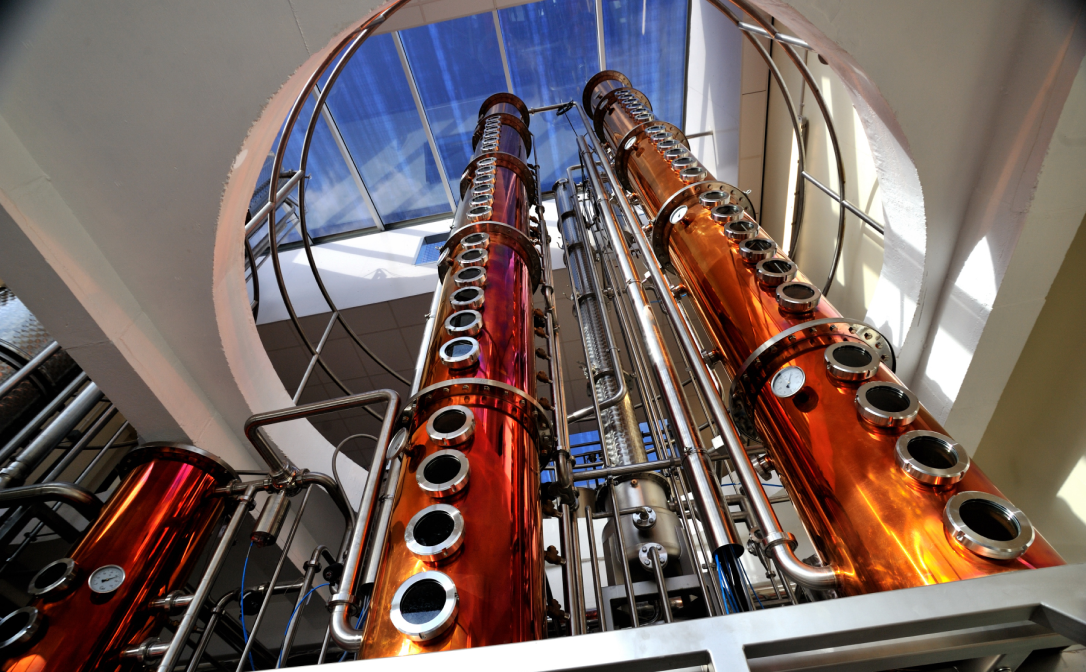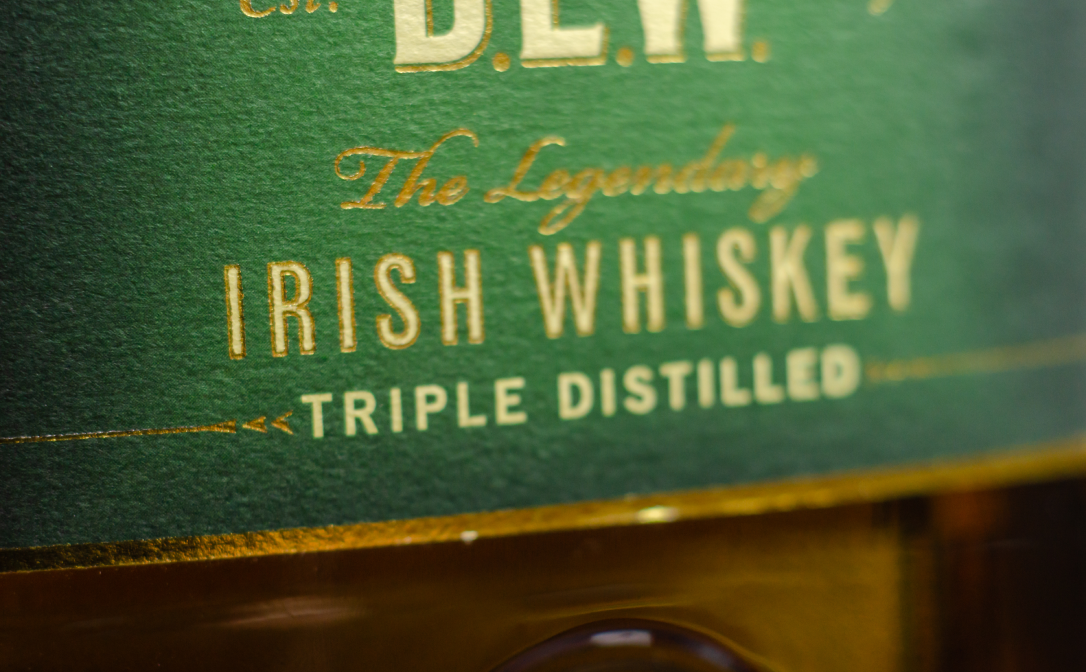Whether your preferred dram is a Scotch, Irish, Japanese, Bourbon, or even a Tasmanian, the difference between the words whisky and whiskey has raised eyebrows and hackles for decades. Just what is the difference between these two spellings and what (if anything) can we discern about these spirits from how they are spelled?
What is whisk(e)y?
Firstly, it may surprise many to learn that there is no global definition of what whisk(e)y is. Legal definitions of spirits fall under national and regional regulations. Scotch whisky, for example, is regulated under UK law and Bourbon whiskey is defined by US federal law. To drill down further, Tennessee whiskey meets the same federal regulations as Bourbon but is subject to extra requirements under Tennessee state law.
When these spirits are sold internationally, their unique characteristics are protected not by the laws in their country of origin, but by international trade agreements, ensuring mutual respect for these definitions. For example, there is nothing in UK law that defines what Bourbon whiskey is, however due to trade agreements between the US and the UK, each country agrees to respect the rules around how these spirits are labelled and sold. This is why you will not find a London Bourbon nor a Kentucky Scotch.
So, while there is no global definition of what whisky or whiskey is, generally it is understood to mean a spirit fermented from a mash of grains that has been distilled and then aged in wooden casks. There are exceptions to this general definition, with some countries in Asia for instance allowing local spirits made in a different manner to be labelled and sold domestically as ‘whisky’ or ‘whiskey’. Typically, these spirits are of lower quality are not generally exported, as they would not meet the definition of whisky or whiskey in most global markets.
One of the most respected whisky-producing countries is Japan, with a strong tradition of very high-quality whiskies. This, despite there being no national legislation defining how Japanese whisky is made. That said, most respected distilleries in Japan follow a voluntary code which ensures that Japanese whisky meets similar high production definitions as Scotch whisky and Irish whiskey.
Whisky and whiskey: what’s the difference?
No doubt, as a keen-eyed reader, you will have already noticed that which spelling is used closely follows the country of production. While there are a few exceptions, broadly speaking we can say that the Scots, Japanese and Canadians make whisky, while the Irish and Americans make whiskey. This schism in spelling can be traced back to the 1800s, and a disagreement between Scottish and Irish distillers on how to adapt to an innovation in distillation - the emergence of continuous distillation using column stills. The spirit produced by this invention was much lighter than the traditionally pot-distilled whiskies of both nations. One nation chose to blend this new spirit into their rich malt spirit, while the other distained what they considered an adulteration of their pure pot-still whisky. These two intractable positions resulted in decades of legal wrangling over what whisky was, and ultimately resulted in one nation inserting an ‘e’ into the spelling of their unblended ‘whiskey’ to differentiate it from whisky blended with this new ‘silent spirit’.

An example of a column still
To understand how this quarrel came about, a little historical context is useful. What we would now call malt whisky was produced across the United Kingdom by the 1700s, most notably in Scotland and in Ireland which was then part of the UK. This spirit was made from malted barley and was produced by hundreds of distilleries, many of which were small enterprises distilling any excess of barley from local harvests. In an effort to boost their revenues the UK government raised the taxes on malted barley. This resulted in some Irish distillers mixing other grains such as oats, rye and unmalted barley into their whisky mash bill to swerve these new taxes. By happy coincidence the flavours and textures produced in this new ‘pot-still Irish whisky’ proved very popular. Meanwhile, the phylloxera epidemic of the1860s killed most of the vines in France and much of Europe, resulting in the sudden collapse of the wine (and brandy) trade. This in turn resulted in a massive boost in demand for whisky which the larger Irish distilleries were only too happy to oblige. Because their signature ‘pot-still’ whisky style used a mixed grain mash bill and was, therefore, subject to fewer taxes than the traditional Scottish ‘pure-malt’ whisky style, Irish whisky produced by the enormous Dublin distilleries of Jameson, Powers and Roe, soon grew to become the predominant aged spirit across the British Empire and beyond, both in terms of quality and quantity.
During this time the Scottish Haig whisky dynasty had been experimenting with a new form of distilling, under the stewardship of the innovative Robert Stein. His initial adaptations of a single column continuous still were further developed upon by Irishman Aneas Coffey. Having recently retired as a leading officer in the Irish customs and excise office, Coffey patented his double-column continuous still in 1830. Many double column stills are today referred to as ‘Coffey stills’, in tribute to Aneas Coffey and not as some may think a reference to ‘your cup of joe’. Importantly, the spirit made by this type of continuous distillation was not just lighter in character, but also vastly cheaper to produce.
The canny Scots decided to steal a march on their Irish contemporaries and blended this new lighter spirit in with their rich malt whisky to produce a more accessible (and more profitable and affordable) blended whisky. Unsurprisingly, the Dublin distillers were none too pleased with this development and lobbied for this new blended spirit to be barred from being labelled as ‘whisky’. Despite their repeated suits, the UK courts found in favour of the Scots. To this day most whisky produced in Scotland is blended whisky – and some if it is very fine stuff indeed.
To add insult to injury, much of this new blended Scotch whisky was exported to the major international markets in North America via Dublin, labelled as ‘Dublin Export Whisky’.
Despite having lost in the courts, the Dublin distillers steadfastly refused to join the blended whisky revolution, and instead rebranded their unblended spirit as pure pot-still Irish whiskey. This new spelling with an ‘e’ was an effort to differentiate Irish pot-still whiskey from what they considered to be inferior, adulterated blended whisky. Most Irish distilleries and bonders followed suit, so that by the end of the 1800s it was firmly established that Scotch was whisky, and Irish was whiskey. By the mid-1900s Irish whiskey distillers did eventually succumb to the inevitable and began blending grain spirit from column stills with their pot-still whiskey. However, the spelling remained the same, ‘blended Irish whiskey’.

Irish Whiskey, with the added letter 'e'.
Want to read more? Check out this older blog post on the changing face of Irish whiskey.
Whisk(e)y goes global
So, the spelling of the word can indicate where the spirit was made but tells you very little about how it was made. Irish single malt whiskey for example has much more in common with Scotch single malt whisky than it has with blended Irish whiskey. And vice-versa.
But why then, you may ask, do Americans make whiskey, while Canadians make whisky? The answer is tied up in cultural and political history. From the earliest days of north American distilling, whiskey was generally made with mixed mash bills of different grains, reflecting more closely the Irish pot-still style than Scottish malt whisky. That coupled with a strong rebuking of all things British by the independent minded Americans, ensured that most US whiskeys retained the Irish ‘e’ in their spelling. Not that this was a hard and fast rule by any means. Indeed, both spellings can be found across America today, as exemplified by Maker’s Mark Straight Kentucky Bourbon whisky.
Meanwhile further north, early Canadian whisky distilleries were set-up and run by British loyalists, many of whom had fled north to the British commonwealth of Canada after American independence. As Canadian distilleries evolved, they were built on an industrial scale and run in a very efficient manner, embracing the blending of pot-distilled and column-distilled spirits. And so, despite the use of mixed mash bills in Canada, the closer cultural affiliation with Britain and the wide-spread use of column distillation and blending determined that Canadians made whisky.
Japan came a little later to the whisky party under the guidance of the two godfathers of Japanese whisky, Masataka Taketsuru and Shinjiiro Torii. Together they established the Yamazaki distillery in the 1920s, leaning heavily on Taketsuru’s experiences of distilling whisky in Scotland. Due to the direct influence of Scottish distilling practices, the Japanese adapted the Scottish whisky spelling. Under Torii’s stewardship Yamazaki expanded to become what we know today as the Suntory whisky empire, while Taketsuru branched out to set up the Yoichi distillery, which became the genesis of the other giant of Japanese whisky, Nikka.
Today, across the ever-expanding range of whiskies and whiskeys from Germany to New Zealand, the spelling tells us much less about the liquid in the bottle than some of the other words on the label:
- Is it a single malt, a blended malt, a single pot-still, a single grain or a blend?
- What grains feature in the mash bill?
- Was the malted barley peated or not?
- What sort of stills were used to select and concentrate the aromas and textures of the spirit?
- What types of casks were used to age the spirit?
- What is the bottling strength?
- Was it chill filtered?
- Is spirit caramel colouring permitted in this style of whisk(e)y?
Understanding how these factors impact the style and quality of your dram will be much more informative than the spelling on the label.
Sláinte!
To learn more about how to decode labelling terms in whisky, whiskey, and all the world’s major spirits click here to explore the range of WSET spirits qualifications.
This blog post was written by Charlie McCarthy, WSET's Business Development Manager - Spirits. Charlie joined WSET in 2019, having worked for many years as a consultant to spirit brands and high-end venues. Charlie learned his craft behind some of London’s best cocktail bars, going on to develop a specialism in event bartending, which lead to brand advocacy projects with William Grant & Sons and Bacardi. Charlie has a wealth of experience delivering WSET masterclasses from Berlin to Singapore, training bar teams for Doyle Collection Hotels in London and Washington DC and designing cocktail menus for World Duty Free, Tullamore DEW & Marriott properties for the Gorgeous Group. Charlie is qualified to deliver WSET spirits qualifications up to the Level 3 Award in Spirits and is always delighted to champion WSET spirits qualifications.


